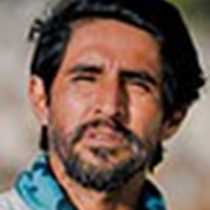Santa Cruz
This is one of Galápagos’ largest Islands and, due to its location in the middle of the archipelago, it’s also the most inhabited and the center of commercial and tourist activities. It is an obligatory stop for all visitors to this beautiful corner of the world. The Charles Darwin Research Station is based here and for some years has worked together with Galápagos National Park, running conservation projects for the protection of the unique local resources. We left our ship to go to a very special place in the town of Puerto Ayora, to learn more about this.
One of the most prominent projects is the Giant Tortoise Breeding and Rearing Center that includes several island tortoise species, among them the best-known of all and a symbol of conservation: a single tortoise nicknamed Lonesome George, whose true home is an island above the equator called Pinta. Lonesome George was found in 1971 and brought here the following year, with the hope of having him crossbreed with females of close species to maintain the line of descendants.
Another similar project includes another species of tortoise known as saddleback, whose best representative is a male tortoise nicknamed Super Diego, for he once lived in the San Diego Zoo before being returned to Galápagos to join the only other species survivors, 12 females and two males. Together they have produced more than 1500 tortoises since the 1970s; today many of them are back on their island breeding on their own, making this one of the most successful programs conducted by these institutions.
After this very interesting walk we headed back through town where some had the opportunity to do some shopping in the local galleries, which have very interesting handcrafts made by skilled artisans from different regions of Ecuador. We gathered at a place called “The Rock” for some refreshments before making our way to the highlands to reach a farm where we learned about making liquor, panela and melaza out of sugar cane, the process of roasting coffee and putting these two things together for delicious results.
On our way to the restaurant for lunch some decided to arrive in different ways than riding the bus, like jogging and bike riding. After having a good meal we hopped back on the busses and continued on our way to the giant tortoise reserve to meet these enigmatic creatures, this time in their own natural state. It just couldn’t have been better; they were everywhere and all of us enjoyed them reacting to us as if we just weren’t there. Soon they will leave the highlands to move to lower elevations where they can find good soil to bury their eggs and good energy for the incubation, which takes three to four months.
Another thing that attracted our attention was a formation called a lava tube, whose mysterious inside reveals its volcanic nature. After exploring the lava tubes and enjoying the amazing green highlands, it was time to go back to town for a little more exploring or shopping before returning to the National Geographic Endeavour, ending another glorious day in the Galápagos Islands.




